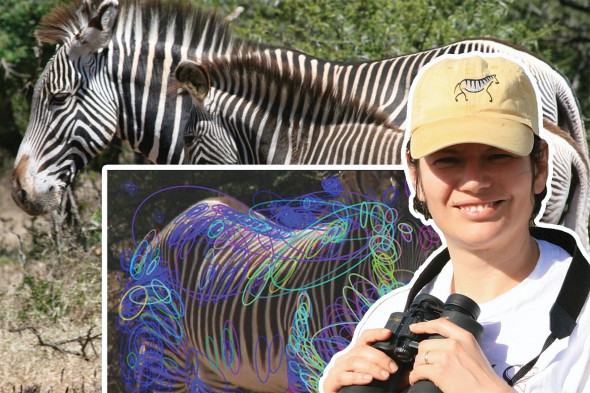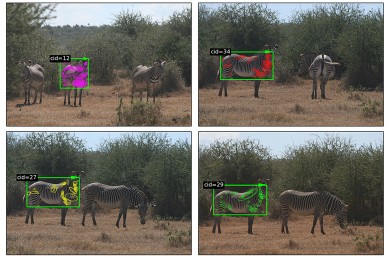Capturing wildlife information through thousands of lenses

Computational ecologist Tanya Berger-Wolf helped lead a project that uses software to gather information about wildlife populations in Africa. Photos: Tanya Berger-Wolf/IBEIS
If you can crowdsource everything else, why not giraffes and zebras?
To celebrate Kenya’s wildlife heritage, the Kenyan Wildlife Service hosted a Wildlife Festival and invited anyone with a camera — students, citizens and wildlife enthusiasts of every stripe — to photograph as many zebras and giraffes as possible at the Nairobi National Park on the first two days of March. The results: more than 10,000 photos, “taken by 31 teams, 75 photographers, and a bus of 40 school kids from the worst slum in east Africa who saw wild animals for the first time in their life,” says computational ecologist Tanya Berger-Wolf.
“Their photos will contribute to our knowledge of the ecology and conservation of the zebras and giraffes who live there,” said Berger-Wolf, associate professor of computer science who directs the overall design of IBEIS (Image-Based Ecological Information System), software that will be used to analyze the photographs.
The project will provide the final count of the number of zebras and giraffes in the park, she said.
IBEIS can take collections of images from field scientists, tourists and incidental photographers — or gathered from camera traps, robots or drones — and answer queries about population size, species interactions, movement patterns and other data.
The software was developed by a collaboration of scientists from UIC, Princeton University, Rensselaer Polytechnic Institute and the nonprofit WildMe.org. It can detect various species of animals in photo images and identify individual animals “of most striped, spotted, wrinkled or notched species — much like recognizing a person by a fingerprint,” Berger-Wolf said.
“IBEIS stores information about who the animals are, where and when they are there, and provides tools that scientists and curious people can use to find out what those animals are doing and why they are doing it.” Such information, she said, can “provide a great tool for basic science and for improving management and conservation of animals.”

IBEIS uses images to answer queries about population size, species interactions, movement patterns and other data.
IBEIS was piloted at the Mpala Research Centre and Ol’Pejeta Nature Conservancy in Kenya. The first full prototype was deployed last month at the Lewa Wildlife Conservancy in Kenya. Princeton University ecologist Daniel Rubenstein directs the biological aspects of IBEIS design and deployment.
Charles Stewart, computer vision scientist at Rensselaer Polytechnic Institute, oversees the image analysis engine for individual animal identification, based on the foundation of his software HotSpotter. Jason Holmberg, a data management expert with WildMe.org, created the WildBook, which powers the IBEIS data management system.
Support for IBEIS development has been provided by the National Science Foundation, Microsoft Research and private donations.
